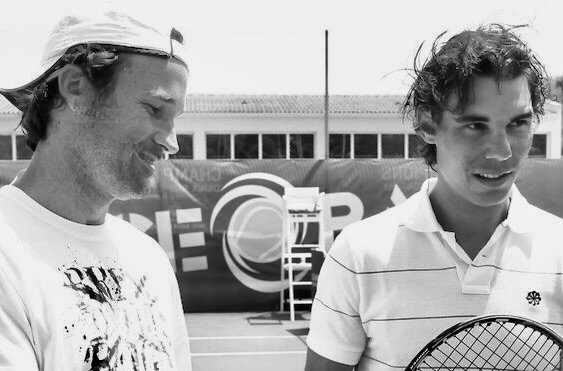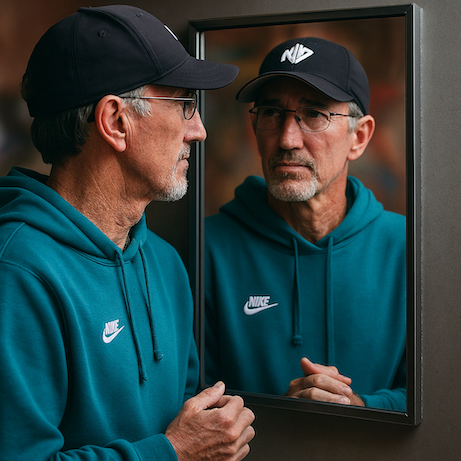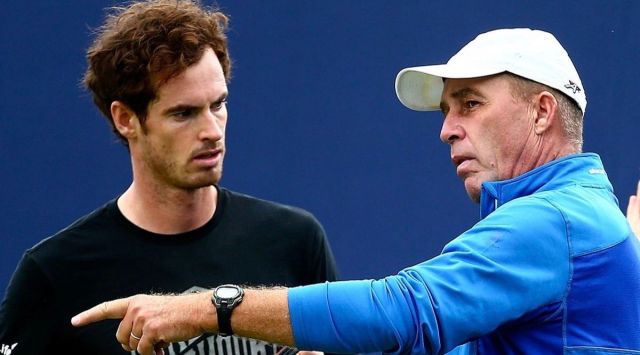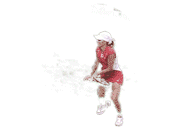The Coaching Mirror:
How the Best Coaches Coach Themselves First
Kyle LaCroix
Introduction: The Mirror No One Sees
In tennis coaching, we’re trained to observe, instruct, and guide. Our gaze is constantly outward: to the player’s footwork, their body language, the spin of the ball. But what about the gaze inward? What about the coach who has the courage to turn the mirror around?
Great coaching isn’t just about spotting flaws in a forehand or refining a serve. Inexperienced coaches can spend so much time looking for things that are missing, they often don’t see what’s already there. It’s about creating an environment where growth is modeled, not just demanded. And that starts with one person — the coach.
What separates the good from the truly great isn’t knowledge. It’s self-awareness. It’s emotional regulation. It’s the ability to coach yourself before you coach anyone else. We expect our players to develop, to improve, to challenge themselves, but why don’t we?
This is what I call The Coaching Mirror. And in this article, we’re going to explore how some of the world’s top coaches have used it — and how you can too.
Chapter 1: Carlos Moyá — Leading with Humility

When Carlos Moyá began coaching Rafael Nadal in 2016, many questioned what more could be added to a 14-time Grand Slam champion’s game. But Moyá didn’t enter the box with ego. He entered with humility.
His secret? He saw his role as a mirror. Moyá brought presence and perspective, not over-instruction. He often said his goal wasn’t to change Rafa, but to help Rafa see himself more clearly. That required Moyá to keep his own ego in check and his emotional state grounded, especially in high-pressure moments.
“I never tried to be smarter than Rafa,” he once said. “My job is to be calm when he can’t be.”
That’s the coaching mirror at work: checking your emotional response before reacting, regulating yourself so your player doesn’t have to.
Chapter 2: Darren Cahill — The Inner Game of Coaching

Few coaches exemplify introspective coaching better than Darren Cahill. With a track record that includes guiding Lleyton Hewitt and Simona Halep to world No. 1 rankings, Cahill is a technician, yes — but more importantly, he’s a student of people.
During Halep’s emotional ups and downs, Cahill could have easily defaulted to tactical corrections. Instead, he often paused and reflected. He famously stepped away from coaching Halep briefly in 2017, citing the need for her to take more ownership of her mindset. It was a bold move that ultimately led to growth — for both coach and player.
In interviews, Cahill speaks often of controlling the controllables — not just on court, but within himself. That internal regulation became the blueprint for the mental stability he instilled in his players.
Chapter 3: Ivan Lendl — Stillness Under Fire

When Andy Murray brought Ivan Lendl into his camp, it wasn’t for a technical overhaul. It was for poise. Lendl, famous for his stone-faced composure during matches, became the emotional anchor Murray lacked.
Lendl’s stillness was no accident. It came from years of self-discipline. He brought that internal calibration into the coaching role, never overreacting, never making the moment about himself.
What most fans missed was that behind the scenes, Lendl constantly reviewed his own reactions, rehearsed match scenarios, and conditioned himself to be emotionally neutral. He didn’t just teach mental toughness — he embodied it.
The coaching mirror, in Lendl’s case, was polished by repetition, awareness, and choice.
Chapter 4: The SETS Framework for Self-Coaching
At SETS, we work with coaches across the country who are leading programs, mentoring staff, and trying to grow without burning out. One of our most important mantras: you can’t pour from an empty cup.
So we coach and develop the coaches. Here’s how we help them turn the mirror on themselves:
- Daily Debriefs — At the end of each day, ask: What did I do well? Where was I reactive? What would I do differently?
- Emotional Tracking — Use a 1-5 scale to rate your emotional state before and after each session. Start seeing patterns.
- Mentorship Circles — Peer feedback isn’t a threat — it’s a tool. We create spaces for honest reflection. Feedback
is a GIFT.
Given with Permission
Intended for growth
For us, not about us.
Targeted for success
- Journaling Prompts — Questions like: What did I avoid today? What am I modeling for my players?
- Intentional Training — The coach should be in as much of a learning cycle as the player. We prescribe workshops, certifications, and yes, therapy when needed.

Chapter 5: Why This Matters More Than Ever
Today’s tennis landscape isn’t just about who hits harder or plays smarter. It’s about who can connect deeper, manage complexity, and lead with presence. The next generation of players is watching. They pick up on your tone. Your posture. Your energy. And they mirror it. If we want players who are composed, resilient, and intentional — we as coaches have to live those traits first. It doesn’t matter if you’re coaching a 12-year-old beginner, a D1-bound athlete or a professional player. Your emotional example sets the ceiling.
Conclusion: The Courage to Look Inward
The coaching mirror is not easy to face. It reveals our impatience. Our fear of inadequacy. Our need for control. But it also reveals our capacity to grow.
Carlos Moyá didn’t need to fix Rafa — he needed to center himself. Darren Cahill didn’t dominate Halep — he stepped back so she could step forward. Ivan Lendl didn’t lecture Murray — he modeled presence.
So the next time you step on court, ask yourself:
"What am I modeling today? What am I practicing emotionally that my players will absorb?"
Because at the highest level of coaching, the best thing you can teach your players is who you are when no one is watching.
That’s the power of the mirror.




